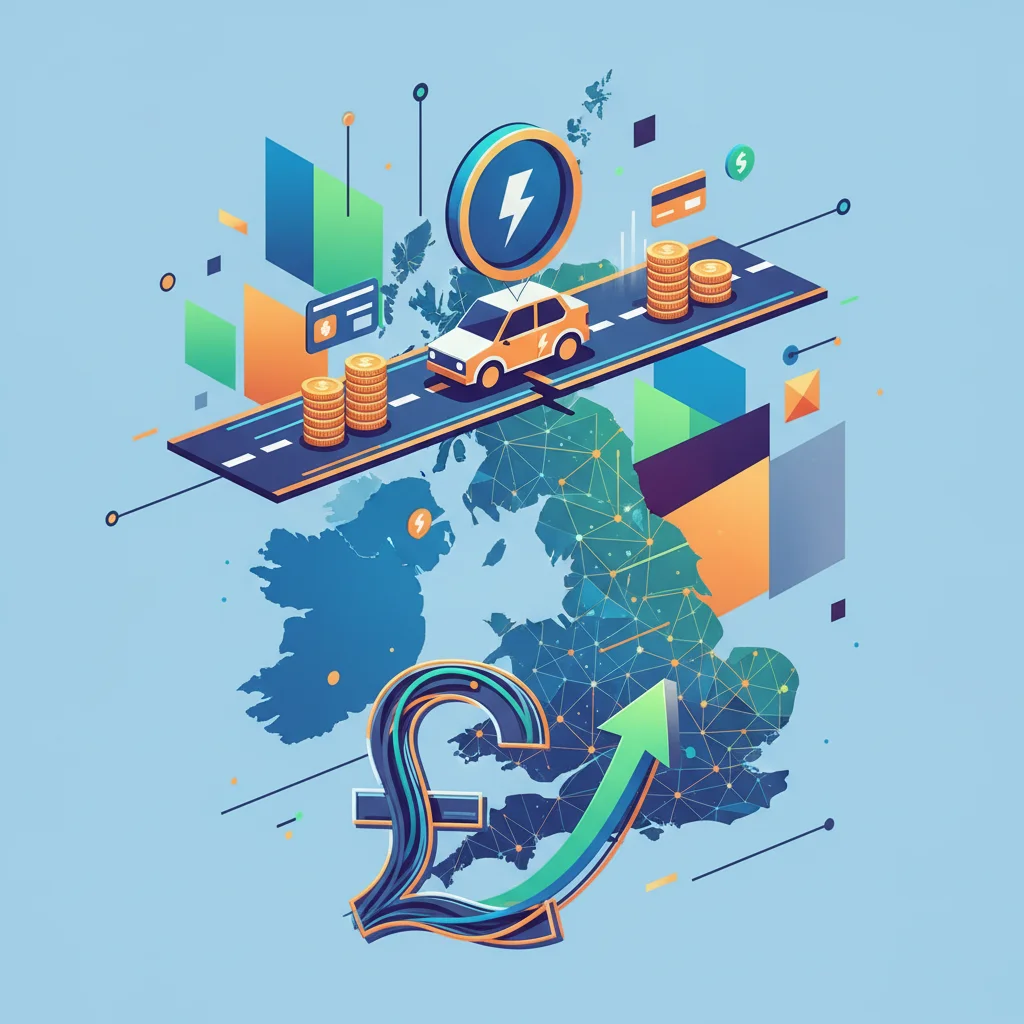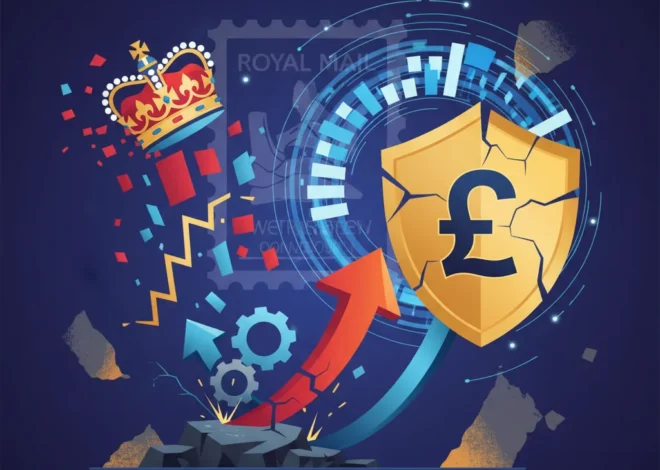
The End of Free Rides: Why the UK is Gearing Up for Pay-Per-Mile EV Charging
The Electric Revolution’s Billion-Pound Problem
The rise of the electric vehicle (EV) is one of the most significant technological and economic shifts of our time. Silent, efficient, and emissions-free at the tailpipe, EVs represent a monumental step towards a greener future. The UK has been a keen adopter, with EV sales surging year on year. Yet, beneath this green success story lies a fiscal time bomb, quietly ticking away at the heart of the nation’s finances. Now, it appears the government is finally preparing to defuse it.
According to a report from the Financial Times, Chancellor Rachel Reeves is poised to unveil plans for a new road pricing system, targeting EV drivers with pay-per-mile charges. This isn’t a punitive measure against green-conscious motorists, but a pragmatic response to an unavoidable economic reality: the slow, certain death of fuel duty.
For decades, the tax levied on every litre of petrol and diesel has been a cash cow for the UK Treasury, funding everything from hospitals to highways. But as drivers switch to electric, this river of revenue is drying up, threatening to leave a multi-billion-pound hole in the public purse. The proposed solution marks a pivotal moment for the UK, signaling a fundamental rewrite of how we pay for our roads and carrying profound implications for the national economy, the automotive industry, and the future of personal and commercial transport.
The £25 Billion Fiscal Black Hole
To understand the gravity of the situation, one must appreciate the scale of fuel duty. This single tax has been a cornerstone of UK finance, contributing approximately £25 billion to the exchequer in the 2022-23 fiscal year, according to the Office for Budget Responsibility (OBR). When combined with Vehicle Excise Duty (VED), total motoring taxes have historically raised around £35 billion annually.
However, the OBR’s forecasts paint a stark picture. As the 2035 ban on new petrol and diesel car sales approaches, this revenue stream is set to plummet. The transition to electric power, while an environmental imperative, is creating a fiscal crisis. Without a replacement, the government faces a choice between cutting public services, increasing other taxes like income tax or VAT, or borrowing more—none of which are politically or economically palatable.
The table below illustrates the stark contrast between the current system and the impending shortfall, highlighting why inaction is not an option.
| Revenue Source | Approx. Annual Revenue (Current) | Projected Revenue (Post-2035) | Status |
|---|---|---|---|
| Fuel Duty | ~£25 Billion | Approaching £0 | In terminal decline |
| Vehicle Excise Duty (VED) | ~£7 Billion | At risk (EVs currently exempt) | Needs reform |
| Total Motoring Taxes | ~£32 Billion | Drastic Shortfall | Unsustainable |
This isn’t a distant problem. With over a million EVs already on UK roads, the erosion has begun. A new system isn’t just desirable; it’s an economic necessity to ensure the long-term stability of public finance. The Incredible Shrinking Shopping Cart: How "Shrinkflation" is Silently Eroding Your Wealth
How Would a Pay-Per-Mile System Work?
The concept of “road pricing” is simple: you pay for the distance you drive. The implementation, however, is complex, involving a delicate balance of technology, privacy, and fairness. Several models are likely under consideration:
- Telematics-Based System: This is the most sophisticated approach. A GPS-enabled device, similar to a “black box” used for insurance, would be installed in each vehicle. It would track mileage precisely and could even enable more complex “dynamic pricing”—charging more for driving in congested city centres or at peak times. This model offers the most flexibility for transport policy but raises the most significant privacy concerns.
- Annual Odometer Submissions: The simplest method would involve drivers submitting their vehicle’s mileage during their annual MOT test or online. A bill would then be calculated based on the total miles driven over the year. While easy to implement and privacy-friendly, it lacks the sophistication to manage congestion or differentiate between road types.
– ANPR Camera Network: Leveraging the UK’s extensive network of Automatic Number Plate Recognition cameras, the system could track vehicles as they pass specific points, calculating mileage between them. This is less intrusive than GPS but also less precise and could be complex to manage on a national scale.
The technological infrastructure required for a national telematics or ANPR system represents a colossal undertaking. It would create enormous opportunities for companies in telecommunications, data processing, and financial technology. The development of secure payment platforms and fraud-proof data systems would be a major project where fintech innovation, and potentially even blockchain-based ledgers for transparent and private transaction records, could play a crucial role.
The Ripple Effect: Implications for Markets and Investors
A shift of this magnitude will create waves across the entire economy, presenting both risks and opportunities for investors and business leaders.
The Automotive and Logistics Sector
The immediate impact will be on the total cost of ownership (TCO) for vehicles. The current major selling point for EVs—extremely low “fuelling” costs—will be diminished. While electricity will still be cheaper than petrol, the addition of a per-mile charge will level the playing field. This could influence consumer purchasing decisions and potentially slow the pace of EV adoption if not implemented carefully. For the logistics and haulage industry, which operates on thin margins, a per-mile charge could significantly impact operational costs, likely being passed on to consumers in the price of goods.
Infrastructure and Technology Investing
This is where the most significant investment opportunities lie. A national road pricing system is a massive infrastructure project. Investors should be watching companies in several key areas:
- Telematics & GPS Providers: Companies that manufacture and manage in-car tracking technology will be in high demand.
- Data Centres & Cloud Computing: The vast amount of data generated will require robust storage and processing capabilities.
- Fintech & Payment Systems: Secure, efficient platforms will be needed to handle billions of micro-transactions. This is a prime area for financial technology firms specializing in scalable payment solutions.
- Cybersecurity: Protecting the personal data of millions of drivers will be paramount, creating a huge market for cybersecurity services.
The stock market will likely react as policy details become clearer. Companies positioned to win government contracts could see their valuations soar, while sectors that face higher costs, like logistics, may face headwinds. The Price of Peace: Why Economic Incentives Alone Can't Solve the Gaza Crisis
Fairness and Economic Disparity
A critical element of the policy design will be ensuring fairness. A flat per-mile rate would disproportionately affect those in rural communities who have no alternative to driving long distances, as well as lower-income workers who commute by car. This is a core challenge in economics. A successful system must be progressive and account for these disparities, as highlighted by a 2023 report from the Climate Change Committee which emphasized the need for a fair transition. The table below outlines a hypothetical cost comparison.
| Driver Profile | Current Petrol Car (at £1.50/L, 45 MPG) | EV with Road Pricing (at 4p/mile + electricity) | Commentary |
|---|---|---|---|
| Urban Commuter | ~£1,515 Fuel Cost | ~£400 Road Tax + ~£500 Electricity = ~£900 | Significant saving remains for EV driver. |
| Rural Resident | ~£1,515 Fuel Cost | ~£400 Road Tax + ~£500 Electricity = ~£900 | Higher mileage could make this less advantageous. |
| Commercial Van | Potentially higher fuel cost | Charge could be a significant new business expense. | Policy will need special consideration for business users. |
Note: Figures are illustrative. The actual per-mile rate is yet to be determined.
The Road Ahead: A Necessary Transformation
The introduction of a pay-per-mile system for EVs in the UK is no longer a question of “if,” but “when” and “how.” The economic imperative is clear. The collapse of fuel duty revenue is a structural threat to the UK’s public finances that cannot be ignored. While the transition will be technologically and politically complex, it is a necessary evolution of our taxation system to align it with 21st-century transport.
For investors, business leaders, and finance professionals, this is a trend to watch closely. It signals the dawn of a new era in mobility, one where the intersection of transport, technology, and banking will create new markets and investment paradigms. The move from a tax on fuel to a tax on distance is a profound shift in economics, one that will reshape business models and consumer behaviour for decades to come.
The road ahead will have its bumps, but it leads to a more sustainable and fiscally sound future for the UK’s transport economy. The end of the “free ride” for EVs is the start of a smarter, fairer system for all. The Apple Tax on Trial: How a UK Ruling Could Redefine Big Tech's Financial Power


